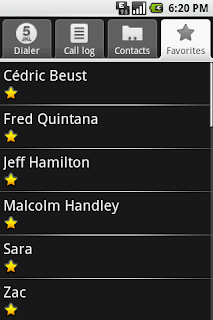Our 100th post -- What about MY phone?
When we launched last year, we realized that we needed to better communicate what the Google mobile team was up to. Since then, we've been working hard to provide you with timely and useful information. We've also sought to keep our posts personal and engaging by introducing you to the Googlers behind our products, incorporating video, and enabling comments.
While we're thrilled that our readership has continued to grow, we want to make the mobile blog even more useful and interesting to you in 2009. We invite you to tell us how we can improve. What else do you want to see on the mobile blog? Are our posts too long or too short? What phones do you most want to read about? Please fill out this quick survey to let us know what you think.
In celebration of our 100th post, we're going to attempt to address one of the blog's most frequent comments: "What about MY phone?" This comment always seems to be tinged with such angst and passion. Trust us, as users we know your pain. But we also know the difficulty of developing software for disparate phones.
We've put together a video that gives you a behind-the-scenes glimpse of our "Sky Lab" that contains over 800 phones for developing, demonstrating, and testing purposes. Although we have so many phones, we currently can't make all of our products work on all of these phones -- we face the same challenges that every developer faces in the mobile industry: we have to choose. So this video also reveals two very different approaches for choosing devices in this industry... If you have any better ideas, let us know!
Of course, if you've been following our blog you may have noticed some patterns. We do like phones with good browsers and flat-rate data plans. Stay tuned to the Google mobile blog for more on this in the new year.


































 see a restaurant or building up close, I can switch to Street View and view a panorama from street level. I can even turn on Compass mode to let me look around the panorama by moving my phone up, down, and to the side. It's like popping up a virtual periscope anywhere you want to check out what's there with your own eyes. Check out the video below for a quick demo. Note that Street View on Android is only available in the US at this time.
see a restaurant or building up close, I can switch to Street View and view a panorama from street level. I can even turn on Compass mode to let me look around the panorama by moving my phone up, down, and to the side. It's like popping up a virtual periscope anywhere you want to check out what's there with your own eyes. Check out the video below for a quick demo. Note that Street View on Android is only available in the US at this time.

 This July, Street View
This July, Street View 





